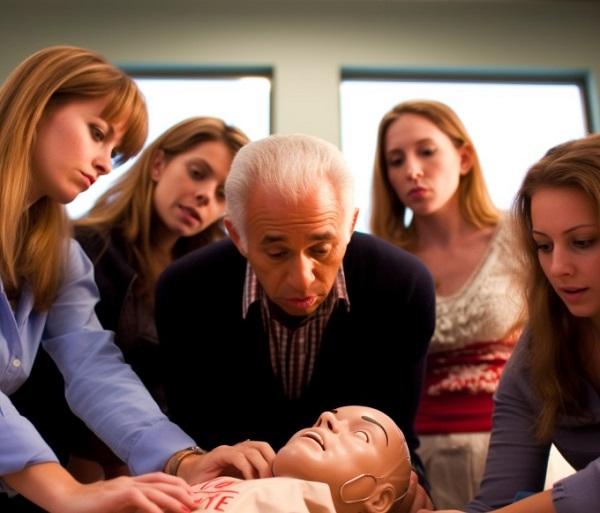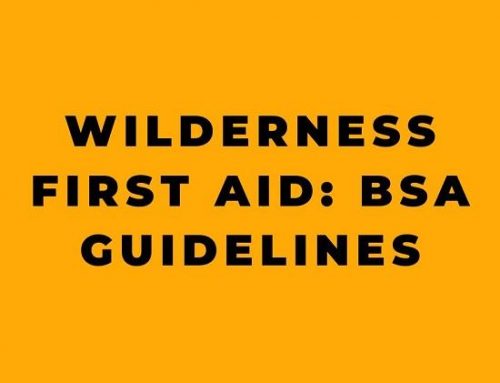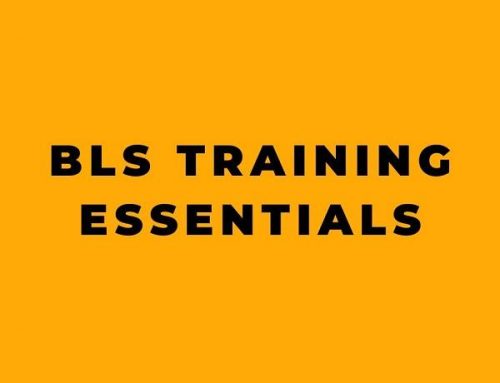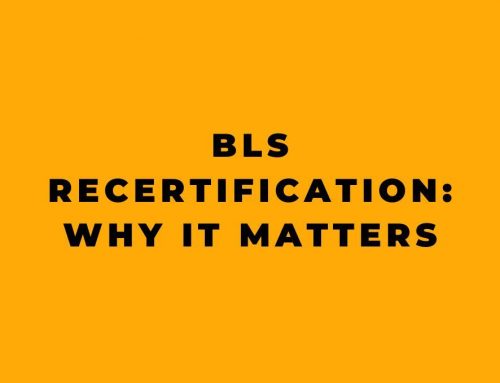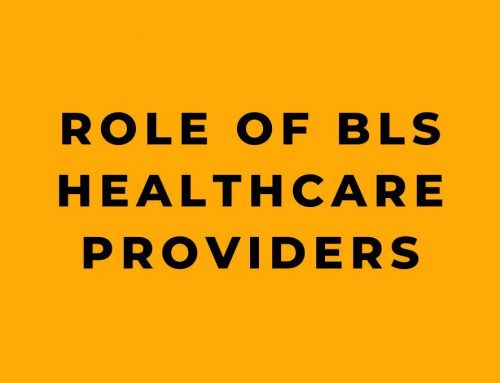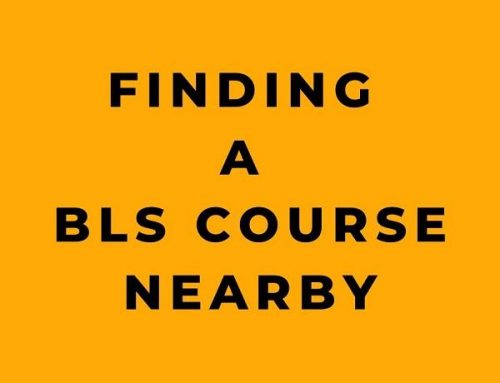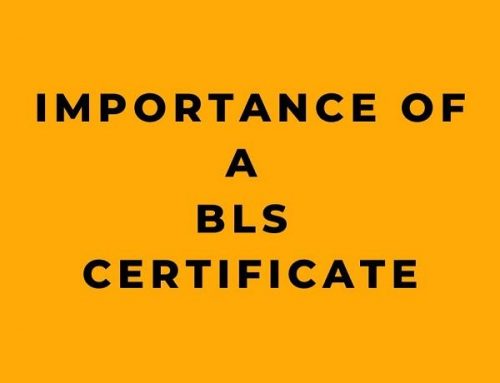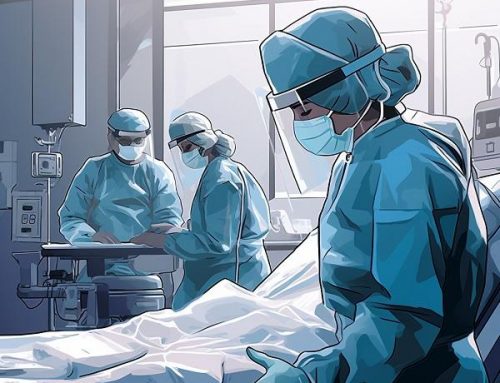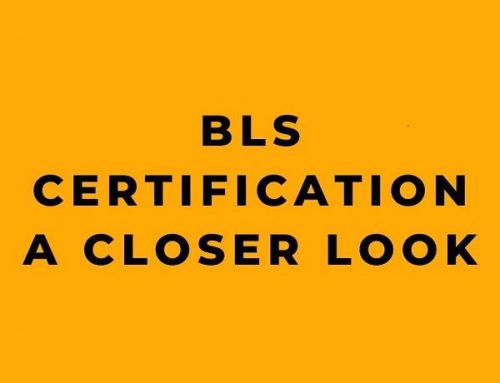Introduction
CPR, or cardiopulmonary resuscitation, is a lot more than just a series of compressions and breaths. It’s a symphony of science, intuition, and courage, the perfect ensemble of human instincts and medical knowledge, all coming together in a powerful performance that can revive the rhythm of life. It’s the technique that turns ordinary folks into real-life heroes, that bridges the gap between a cardiac arrest and the arrival of emergency medical services. CPR is the shield we can all carry against one of the leading causes of death globally, and its importance cannot be overstated.
Personal Stories About How CPR Has Saved Lives
There is the story of Stephanie Williams, a staff member at a school. She saw student Kevin Long collapse on the sidewalk outside the school. Noticing that he wasn’t breathing, Williams immediately began performing CPR, which ended up saving Long’s life. Stephanie was on morning duty at her school in Philadelphia when she noticed one of her students, a young boy with autism named Kevin, collapse on the sidewalk. With the boy not breathing, her CPR training kicked into gear. She never thought she’d have to use it, but there she was, saving Kevin’s life. She told me, “I think it’s very important that everyone should learn CPR. You never know at that moment what may happen, you could save a life”.
On a cold January morning, at a construction site in northeast Longmont, an ordinary day suddenly turned extraordinary. Jack Rumsey, an on-site supervisor for DeFalco Construction, was about to put his lifesaving skills into action. Jack had attended another biennial class the previous year, where he and his co-workers were trained in cardiopulmonary resuscitation (CPR) by the Mountain View Fire Department. Like many, he never anticipated needing to use this critical skill in a real-life situation. But on January 18, his training and instincts were put to the test.
Kelly Shain, a longtime traffic controller for DeFalco Construction, suddenly collapsed near a tool storage shed at the corner of 17th Avenue and Ute Creek Drive. Shain was in cardiac arrest. Jack, who had worked alongside Shain for a decade, was quick to respond.
Relying on his training, Jack began administering CPR. He pressed on Shain’s chest, keeping a steady rhythm as he recalled the steps he had learned. Meanwhile, another co-worker dialed 911, requesting an ambulance. For five agonizing minutes, Jack continued his life-saving efforts. When paramedics from the Longmont Fire Department arrived, Jack had maintained enough of a pulse in Shain that he showed some signs of consciousness. Shain was shocked twice by an automated external defibrillator (AED) before being transported to the hospital.
Shain was first taken to Longs Peak Hospital and then transferred to the Medical Center of the Rockies in Loveland. Reflecting on his harrowing experience, Shain expressed his gratitude towards his colleague: “If it wasn’t for Jack, I wouldn’t be alive.”
Jack modestly credits his crew members for their quick thinking in calling for medical help and for keeping him calm while he performed CPR. He shared fond memories of Shain, describing him as a practical joker who kept everyone smiling. This incident underscores the importance of CPR training, not only for healthcare professionals, but for individuals in various occupations, including construction workers, teachers, school employees, oil industry laborers, personal trainers, and fitness coaches. Organizations in Longmont, including the fire department and the Hopelight Medical Clinic, offer regular classes for individuals and groups to become certified in CPR.
Reflecting on the experience, Jack expressed gratitude that the cardiac arrest had occurred in the presence of his co-workers and not elsewhere. It served as a powerful reminder of the importance of being trained in CPR and the significant difference it can make in a life-or-death situation.
These two remarkable stories underscore the critical importance of CPR training in everyday scenarios. Stephanie Williams, a school staff member, utilized her training to save the life of an autistic student, Kevin Long, who collapsed unexpectedly. Similarly, at a construction site, supervisor Jack Rumsey used his CPR skills to rescue his co-worker, Kelly Shain, who suffered a cardiac arrest. Both incidents serve as powerful reminders of how CPR and AED training can make a significant difference, proving lifesaving in critical moments. The training can be vital not only for healthcare professionals but also for individuals across various occupations and walks of life.
Understanding CPR
Imagine your heart as a tireless drummer, maintaining the essential rhythm of life. When that rhythm falters, when the drumbeats falter, we’re thrown into a precarious balance between life and death. This is where CPR steps in – like the understudy to a lead drummer. Cardiopulmonary Resuscitation, a term as grand as the act itself, is an emergency procedure designed to manually preserve intact brain function and restore spontaneous blood circulation when the heart stops beating. It’s a symphony of chest compressions and breaths, a brave attempt to mimic the heart and lung’s functions, to keep the music of life playing until the real band arrives, that is, the medical professionals.
CPR is an art rooted in the science of survival. The human heart, in its infinite wisdom, is a powerhouse, pumping oxygen-rich blood to every corner of your body, a network of life that keeps your cells functioning and your body alive. But when the heart stops, so does this vital delivery system. The brain, ever so dependent on oxygen, can only hold on for so long before it starts to give up, typically around 4 to 6 minutes. CPR steps into this chilling countdown, manually pumping the heart to circulate blood, and breathing into the person to supply oxygen.
The science of CPR, therefore, is a story of buying time, a tale of keeping hope alive. It’s about understanding that every second without oxygen and blood circulation nudges a person closer to the precipice of irreversible damage. By performing chest compressions, you’re acting as a manual heart, squeezing blood out of this vital organ and into the body. By providing rescue breaths, you’re stepping in for the lungs, replenishing the oxygen in the blood. CPR is about maintaining a tenuous thread of life, bridging the terrifying gap between cardiac arrest and the arrival of professional medical help. It’s a testament to human resilience and ingenuity, a beacon of hope amidst the storm of a medical emergency.
The Importance of CPR Certification
In the grand dance of life, we’re all on stage together. And sometimes, without warning, one of us stumbles. At moments like these, we can either be spectators or we can step up and lend a hand. This is why CPR certification matters. It’s not just a badge for health professionals or lifeguards; it’s a token of human empathy, a testament to our collective will to protect and preserve life. Because cardiac arrests don’t discriminate. They can strike anywhere, anytime – in the middle of a bustling mall, in the hushed confines of a library, or within the cherished walls of our homes. And when they do, the nearest emergency room might be minutes away, but death, only seconds.
Let’s delve into the cold, hard numbers. Every year, hundreds of thousands of people experience out-of-hospital cardiac arrests in the United States. Tragically, only about 10% survive. Yet, survival rates can double, even triple, when bystander CPR is initiated. These aren’t just statistics on a page; these are potential lives saved, stories continued, families kept whole. It’s a sobering truth that highlights the colossal impact of immediate CPR.
CPR plays a pivotal role in what’s known as the “chain of survival” – a series of actions that, when executed swiftly and correctly, can significantly increase the odds of surviving a cardiac arrest. The chain begins with recognizing the emergency and calling for professional help, but the next link, performing immediate CPR, is where everyday heroes come into play. This act of courage and empathy can keep the victim’s heart ‘virtually beating’, preserving the delicate balance of life until the next links in the chain – rapid defibrillation, advanced medical help, and post-cardiac arrest care – can be activated. In essence, CPR certification empowers you to hold a life together when it’s threatening to fall apart. It’s a responsibility and a privilege, a silent vow to be a guardian of life when it hangs in the balance.
Who Can and Should Get Certified
The world of CPR certification is an all-inclusive one. It doesn’t discriminate based on age or physical strength. From high school students to retirees, everyone can learn the vital steps of CPR. Yes, it does require a certain level of physical exertion – the chest compressions need to be deep and fast – but it’s not about Herculean strength. It’s about technique, timing, and persistence. And these are things that can be learned and mastered by just about anyone. As for age, while there isn’t a set minimum, the general consensus is that anyone old enough to understand the instructions and physically capable of delivering chest compressions can get certified.
Now let’s talk about who should get certified. You might be thinking, “I’m not a doctor or a lifeguard. Is this really for me?” The answer is a resounding yes. Consider this: most cardiac arrests occur at home. The life you save with CPR is most likely to be someone you love. But beyond the personal sphere, there are numerous professions and situations where CPR certification could be a game-changer. Teachers, coaches, personal trainers, babysitters, home caregivers, safety officers, construction workers – the list goes on. These are roles where you’re responsible for others, where a medical emergency could arise without warning.
But the scope of CPR certification isn’t limited to these roles. It’s for the frequent traveler who might witness a fellow passenger in distress during a flight. It’s for the avid hiker who could encounter a fellow adventurer in peril on a remote trail. It’s for the community volunteer organizing a local event. It’s for anyone and everyone who wants to be prepared when life throws a curveball. Because when it comes to cardiac arrest, there’s no telling where and when it might strike. All we can control is our readiness to respond, and that’s what CPR certification is all about.
The CPR Certification Process
Embarking on the journey to CPR certification is a noble endeavor, one that transforms you from a bystander to a potential lifesaver. It’s a path well-marked, yet diverse in its learning avenues. The process typically begins with a training course that covers the essential skills of CPR, including high-quality chest compressions, ventilations, and even automated external defibrillator (AED) usage. But it’s not just about memorizing steps; it’s about understanding why each action is essential, about learning the rhythm and flow of the process. Following the training, there’s an assessment – a test of your knowledge and a practical demonstration of your skills. Clear this, and voila! You’re a certified lifesaver, a card-carrying member of an extraordinary league of everyday heroes.
Now, the question arises – where do you get certified? There are many reputable organizations that offer CPR certification. Top of the list are the American Heart Association (AHA) and the American Red Cross. Both offer comprehensive courses designed according to the latest CPR guidelines. There are also local hospitals, community centers, and fire departments that frequently host CPR training sessions. It’s about finding an option that aligns with your location, availability, and preference.
In this digital age, online CPR certification courses have also become increasingly popular. They offer flexibility, allowing you to learn at your own pace, in the comfort of your own home. However, there’s a trade-off. While online courses may cover the same material, they lack the hands-on practice that in-person classes offer. There’s no substitute for practicing chest compressions on a mannequin or getting real-time feedback from an instructor. On the other hand, in-person classes provide an environment that closely mimics real-life situations, which can be invaluable when it comes to performing under pressure. Ultimately, the choice between online and in-person classes depends on your individual needs and circumstances. The most important thing is to take that first step towards certification, because every new CPR-trained individual is a beacon of hope in the fight against sudden cardiac arrest.
A Note About AEDs
The use of Automated External Defibrillators (AEDs) in tandem with CPR has become an integral part of the life-saving process. It’s the next step up on the ladder of intervention, the electrifying jolt that can restart a quivering heart and tip the scales back from the brink of death. AEDs are designed to analyze the heart’s rhythm and deliver a shock if necessary, effectively serving as a mini emergency room in the crucial moments following a cardiac arrest.
When it comes to cardiac arrest, time is the enemy. Each minute that passes without defibrillation decreases the victim’s survival rate by 7-10%. That’s where AEDs come in. These handy devices can be deployed by anyone, even those without medical training, to deliver a life-saving shock before professional help arrives. They are typically found in public spaces like airports, gyms, schools, and office buildings, and are an essential tool in the quest to improve survival rates from out-of-hospital cardiac arrests. In essence, knowing how to use an AED in conjunction with CPR amplifies your potential as a life-saver, ensuring you are armed with the full suite of tools in the fight against sudden cardiac arrest.
What You Learn in a CPR Class
A CPR class is like a map, guiding you through the landscape of a medical emergency. It charts the terrain of chest compressions and rescue breaths, navigates the pathways of automated external defibrillator (AED) use, and equips you with the compass of knowledge to handle varying situations. The journey begins with learning the basics of high-quality CPR – chest compressions that are at least 2 inches deep and delivered at a rate of 100 to 120 per minute, paired with rescue breaths that are just enough to make the chest rise. It’s about mastering this dance between hands and breath, finding the rhythm that could rekindle the beat of a stalled heart.
But CPR isn’t one-size-fits-all. Every life is unique, and so is the approach to preserving it. This is where special situations come into play. An infant or a child in distress requires a different touch, a different cadence. In these cases, the force of the compressions needs to be gentler, the depth shallower, and the ratio of compressions to breaths may vary depending on whether you’re alone or there are other rescuers. A good CPR class will teach you these nuances, ensuring you’re prepared to deliver care that’s not just effective, but also appropriate for the victim’s age and size.
And then there’s choking – a silent villain that can strike anyone, anywhere. Whether it’s a piece of food gone awry or a small object swallowed by a curious toddler, a CPR class equips you with the skills to handle such situations. You’ll learn the Heimlich maneuver for adults and older children, back blows and chest thrusts for infants, and even how to help someone who’s choking and pregnant or wheelchair-bound. A CPR class, therefore, is more than just a course – it’s a toolbox, filled with a variety of life-saving tools that you can wield with confidence when every second counts.
Maintaining Your Certification
CPR certification isn’t a one-and-done deal. It’s like a garden that needs regular tending, a skill that needs consistent refreshing. Most CPR certifications are valid for two years. This timeframe is set not to test your patience, but rather to ensure your skills and knowledge stay up-to-date. The world of medicine and healthcare is a dynamic one, with new research and guidelines emerging frequently. Recertification ensures that you’re always at the forefront of these developments, ready to deliver the most effective care when the need arises.
Recertification is also a way to keep your skills sharp. Let’s be honest, if you’re not using CPR regularly (and we hope you aren’t), it’s easy for the details to fade. The exact hand placement, the precise rhythm of the compressions, the right tilt for the head during rescue breaths – these are all elements that can get fuzzy with time. Regular refresher courses can help reinforce these skills, ensuring that when you’re called upon to perform CPR, you can do so with confidence and accuracy.
Staying updated with CPR techniques and guidelines doesn’t have to be a chore. There are many resources available to make this process easier and more engaging. Subscribing to newsletters from organizations like the American Heart Association or the Red Cross can keep you informed about the latest research and recommendations. Online forums and communities can also be a treasure trove of information, providing valuable insights and experiences from fellow CPR-certified individuals. You could even consider volunteering for events or organizations that provide first aid and CPR, offering a chance to practice your skills in a controlled environment. Maintaining your CPR certification is more than just an obligation; it’s an ongoing commitment to being a prepared and capable lifesaver.
Common Misconceptions and Myths About CPR
In the realm of CPR, myths and misconceptions abound, often fueled by dramatic portrayals in films and television. One such myth is that CPR always saves the day, that it’s a magic bullet that never misses its mark. In reality, CPR doesn’t guarantee survival, but it does significantly improve the odds. It’s a crucial link in the chain of survival, a bridge that buys precious time until more advanced medical help arrives.
Another misconception revolves around the fear of causing harm, of breaking ribs or causing other injuries while performing chest compressions. Yes, in the process of administering high-quality CPR, it’s possible that ribs might crack. But here’s the reality – a broken rib can heal, but a moment lost in a cardiac arrest can’t be reclaimed. The benefits of immediate and effective CPR far outweigh the potential risks.
Now, let’s talk about the legal aspect of performing CPR, something that often sends a shiver of apprehension down people’s spines. The fear of legal repercussions if something goes wrong can be paralyzing. But it’s important to know about Good Samaritan laws. These laws, present in some form in all 50 states, offer legal protection to people who give reasonable assistance to those who are injured, ill, in peril, or otherwise incapacitated. The specifics of these laws can vary by state, but their purpose remains the same – to encourage bystanders to step in and help without fear of legal backlash. So, while it’s important to be aware of these laws in your area, don’t let the fear of legal ramifications deter you from potentially saving a life. CPR certification is about empowerment, not just in terms of skills and knowledge, but also the confidence to act when life hangs in the balance.
Conclusion
In the grand scheme of things, the decision to become CPR certified might seem minor, but its potential impact is anything but. It’s about more than just mastering a set of techniques – it’s about being prepared to stand in the gap, to be that vital link in the chain of survival when someone’s life hangs in the balance. It’s about stepping up when seconds count, armed with the knowledge and confidence to act swiftly and effectively. There are few things more empowering, or more humbling, than having the ability to save a life.
If you’ve made it this far, you’ve already taken the first step. You’ve shown an interest and taken the time to understand the importance of CPR. Now, I urge you, take the next step. Don’t let this be a passing interest. Make the choice to become CPR certified. There are numerous classes available, both online and in-person, that can equip you with the necessary skills. It’s a small investment of time and effort, but the payoff could be monumental.
In conclusion, CPR is more than a skill, it’s a declaration of preparedness, a commitment to safeguarding lives. So, let this be your call to action. Get certified. Be prepared. Become a potential lifesaver. Because the life you save could be someone you love, someone’s best friend, someone’s parent, or child. And in that moment, you’ll realize – there’s nothing ‘minor’ about it.
References:


